-Connecting the Historical Heritage of the Aeronautical Research Institute to the Future, to Create a Place for People to Gather-
Purpose of Installation
The Research Center for Advanced Science and Technology Building No. 1 houses a large wooden wind tunnel that has supported Japan’s aeronautical engineering research since before World War II, preserved in its original state. This wind tunnel, an important aviation heritage, symbolizes the history of Japanese aircraft development, inheriting the DNA of the Aeronautical Research Institute of the former Tokyo Imperial University, which once stood on this site.
History of RCAST and the Wind Tunnel
The origins of the Institute of Advanced Studies trace back to the Aeronautical Research Institute Affiliated with the Tokyo Imperial University, established in 1918. At that time, research on aircraft was cutting-edge. Initially located in Etchujima, the Aeronautical Research Institute was moved to the western edge of the grounds of the Faculty of Agriculture (now Komaba Campus II) in September 1930, following the Great Kanto Earthquake.
This relocation led to the construction of a wooden wind tunnel (now commonly known as the 3m Wind Tunnel), which played a significant role in Japan’s aviation history. This wind tunnel was involved in the design of the Koken long-range aircraft, which set a world record for flight distance in 1938. It was also involved in the design of the YS-11, the first passenger aircraft developed by a Japanese manufacturer (Nihon Aircraft Manufacturing Corporation) after World War II. It is an extremely important historical research facility in the context of Japan’s aviation history. In 2019, it was recognized as an “Important Aviation Heritage” by the Japan Aeronautical Association.
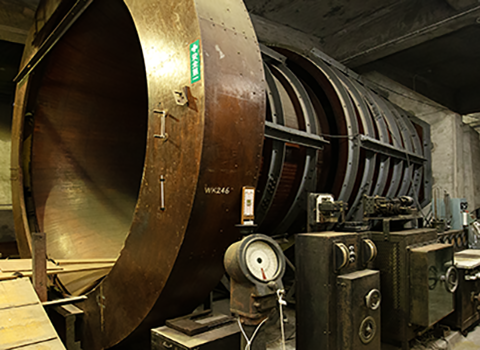
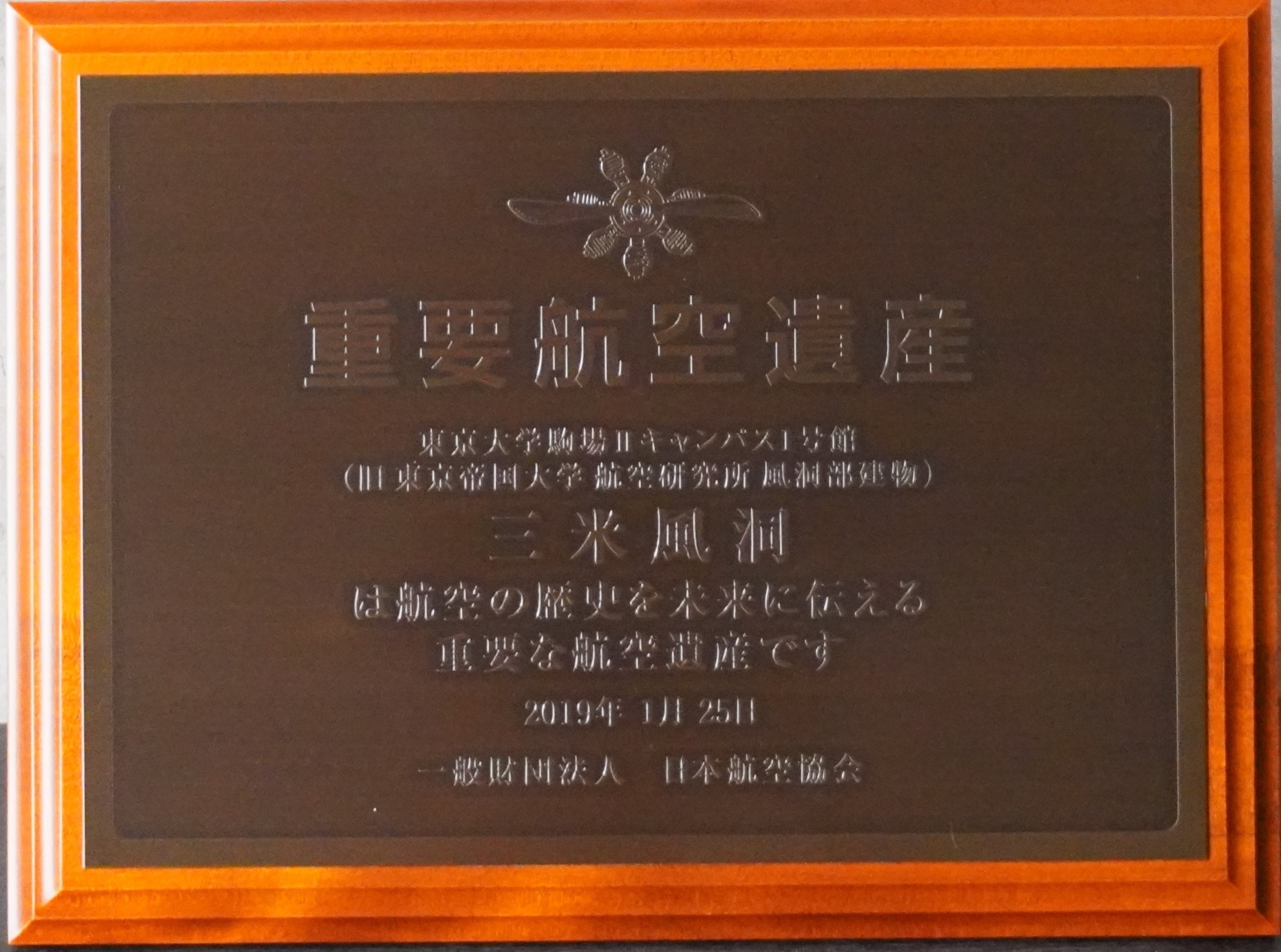
In 2019, the Japan Aeronautic Association designated the wind tunnel facility in Building No. 1 as an ‘Important Aviation Heritage.
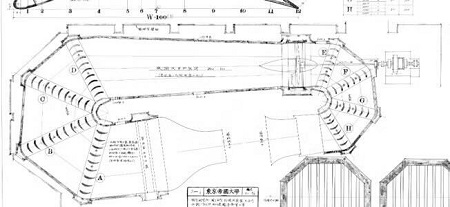
As part of RCAST’s mission, we aim to transform the first building into a new space centered around a “Wind Tunnel Museum”, where people from inside and outside the university can gather. This museum will allow visitors to experience firsthand the history of the site, while also providing a space to engage with RCAST’s current and future research. It will also serve as a salon where researchers, companies, and community members can converse, and as a place for research activity aimed at solving social issues.
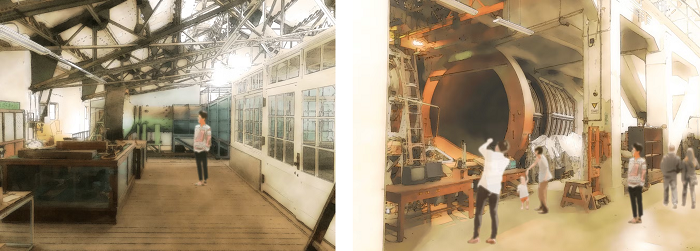
Creating a Wind Tunnel Museum to Connect the History of the Aeronautical Research Institute to the Future
RCAST will renovate this wind tunnel and the building housing it (Building No. 1) to establish a hub for solving social issues. The wind tunnel facility, which once supported cutting-edge research in aircraft development, will be renewed as a museum where many people can safely observe and feel the enthusiasm of the researchers of that time.
In addition, the facility will include an archive showing the history of the Advanced Research Institute, a multipurpose space where researchers, companies, residents, and others involved with the institute can interact, and a research environment where diverse people can gather. This will include spaces for prayer regardless of religion and a café where people with disabilities can work short hours.
In line with our mission to “challenge new issues arising from the development of academia and changes in society, and to pioneer new fields of advanced science and technology for humanity and society,” we will utilize Building No. 1 with a unique approach, characteristic of RCAST.
Request for Support
RCAST will celebrate its 40th anniversary in 2027. As we approach this milestone, and with an eye towards our 50th anniversary in 2037, we are committed to accelerating our efforts in advancing education and research, improving infrastructure, securing talented individuals, and strengthening collaborations with businesses, local communities, and regions. Our goal is to conduct research that enhances people’s lives and society.
We kindly ask for your warm support in creating a special place where the future and history of the Advanced Research Institute converge.
Regarding the Use of Your Generous Support
We will carefully use your donations for the maintenance of Building No. 1,
specifically for:
- Providing maintenance to the wind tunnel (including safety measures) and making Building No. 1 barrier-free
- Securing a multipurpose space to create and strengthen collaboration with society
- Exhibiting research results through collaboration among researchers within and outside RCAST, across various fields
Expected Outcomes
- Stimulate researchers’ motivation
- Strengthen the presence of RCAST
- Create and enhance collaboration with the local community
- Generate research outcomes through collaboration among researchers within and outside RCAST across various fields
- Promote interdisciplinary research at the University of Tokyo, contributing to the development of academia and the cultivation of highly skilled personnel
Experiments Conducted in the 3-Meter Wind Tunnel
The maximum wind speed is 60 meters per second. Numerous experiments have been conducted, including the aerodynamic characteristics of the Kokenki, which achieved a world record, and Japan’s first passenger aircraft, the YS-11. Other experiments conducted include the investigation of the wind pressure on parabolic antennas and high-voltage power lines, and training experiments for ski jump (Olympic) athletes.
Below are some examples of past experiments (excerpt):
- Kokenki (Aircraft Research Institute Long-Range Aircraft)
- A-26 (Ki-77)
- 1/5 scale model of a car
- YS-11*
- Tokaido Shinkansen
- Maglev train
- Motorcycles
- Aerodynamic characteristics of rockets at low speeds
- Wind pressure on buildings at the Osaka World Expo
- Wind pressure on high-rise buildings and surrounding airflow
(Fuji Film Tokyo Headquarters Building, Nippon Real Estate Bank Building, etc.) - Wind pressure on the model of the Main Hall of Dainichirenji Temple
- Wind pressure tests on radar domes
(Mountaintop radar on Mount Fuji, Kashima spaceship radar, Nobeyama Radio Observatory) - Wind resistance tests during the ascent of Mount Everest
- America’s Cup yachts
- Ski jump flights
- Ski jump training (approach, takeoff, flight)
*YS-11 (YS Eleven)
The first domestically produced passenger aircraft developed (designed and manufactured) by a Japanese manufacturer after the lifting of a seven-year ban on aviation activities following World War II.
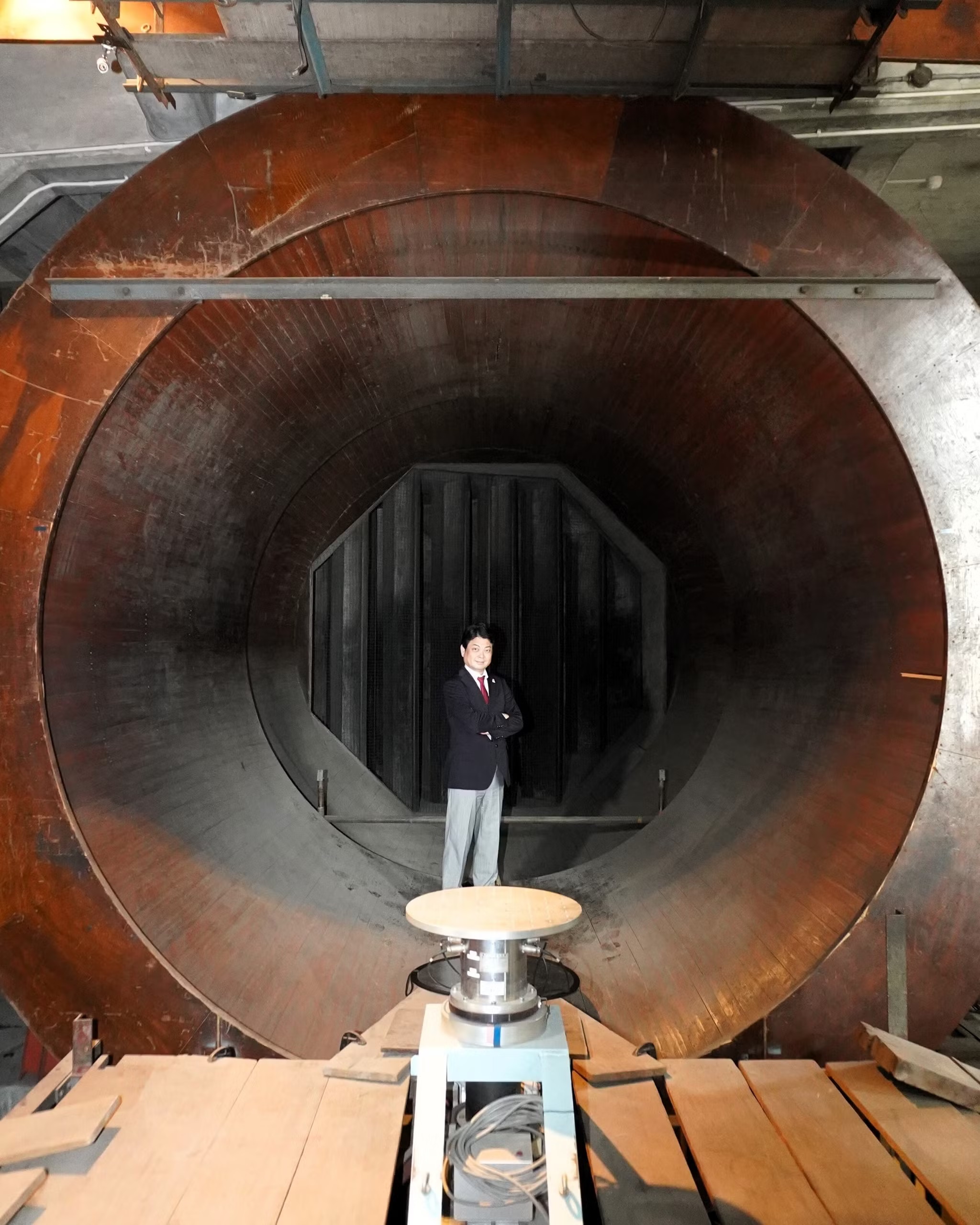
About the Kokenki (Aircraft Research Institute Prototype Long-Range Aircraft; now commonly known as Crimson Wings)
The Kokenki, designed and supervised by the Aeronautical Research Institute of Tokyo Imperial University in 1938, set an international record under the regulations of the Fédération Aéronautique Internationale (FAI) for the longest distance flown in a closed circuit (11,651.01 km) and the average speed over a 10,000 km course (186.197 km/h) from May 13 to 15 of the same year.


Comment from the Fund Representative
"Connecting History and the Future with the Wind Tunnel"
A wind tunnel, as the name suggests, is a device used to measure and observe the loads and airflow on aircraft. It creates an airflow within a tunnel, where various experiments can be conducted using aircraft models.
Even today, wind tunnels are used in various fields such as aircraft and automobile development. The enormous wooden wind tunnel housed in Building No.1 of RCAST has played an immeasurable role since 1930. It can be said that this wind tunnel encapsulates the very essence of Japan's aviation history, including the Kokenki (Aircraft Research Institute Long-Range Aircraft), that set a world record in 1938, and the YS-11.
This fund was established to preserve this wind tunnel, which has been retired from active service, for future generations. The envisioned "Wind Tunnel Museum" aims to be a unique facility where visitors can experience the overwhelming history of the site, while simultaneously experiencing various future-oriented research promoted by RCAST.
Upon opening the doors, visitors will step into a space that feels like they have stepped back 100 years, yet is interspersed with cutting-edge research, creating a unique environment where history and the future coexist. The museum will feature displays of advanced research using fixtures that have remained since the early Showa period. It will be a space where research of science, art, and culture breathes together, made possible by this historic facility. We hope it will be a place where visitors can experience RCAST from various perspectives, feeling both overwhelmed and delighted.
As a token of our gratitude for this project, we will present the following items
※The gratitude and commemorative gifts of the University of Tokyo Foundation will apply.
1.We will send updates via email to all those who have made donations.
The exterior of Building No. 13, which houses the wind tunnel facility
2.Lump-sum donations of 100,000 yen or more (individuals only)
We will invite you to the wind tunnel tour and send you an original item(bookmarks featuring designs of the Aeronautical Research Institute, the wooden wind tunnel, and the prototype long-range aircraft of the Aeronautical Research Institute).
3.Lump-sum donations of 300,000 yen or more (individuals and corporations
We will install your nameplate in Building No. 13.
4.Lump-sum donations of 1,000,000 yen or more (individuals and corporations)
We will install your nameplate in Building No. 13. (a larger one compared to ③)
5.Lump-sum donations of 5,000,000 yen or more (individuals)
④ and items related to the Aeronautical Research Institute, the wooden wind tunnel, and the prototype long-range aircraft of the Aeronautical Research Institute will be presented.
※For nameplates ③ and ④, we will install the nameplates 3 to 4 months after receiving donations by the end of June each year. The same applies to donations received by the end of December.
For donations made in an individual's name, it is possible to include the names of the donor and their relatives within the second degree of kinship.
For donations made in a corporation's name, only the corporation's name will be listed (we cannot list both the corporation's name and an individual's name).
※For item ⑤, we will contact you individually after the end of the month following your donation. Additionally, if you wish to be recommended for the Medal with Dark Blue Ribbon for donations of 5,000,000 yen or more (or 10,000,000 yen or more for corporations and organizations), please enter ‘No return gifts requested for Medal with Dark Blue Ribbon recommendation’ in the ‘Comments’ section of the donation application form. For more details, please see here.
- Inquiries about this project and benefits:
Strategic Planning Office, Research Center for Advanced Science & Technology
4-6-1 Komaba, Meguro-ku, Tokyo 153-8904
Phone: 03-5452-5102
FAX: 03-5452-5425
E-mail: kikaku@rcast.u-tokyo.ac.jp
(Please replace the full-width @ with a half-width @ when sending an email) - Inquiries about donations:
The University of Tokyo Foundation Foundation Office
https://payment.utf.u-tokyo.ac.jp/tokyo_eng/askEntry.php
7-3-1 Hongo, Bunkyo-ku, Tokyo 113-8654
Tel: 03-5841-1217 (10:00-12:00, 13:00-16:00, excluding weekends and holidays) Fax: 03-5841-1219
Related links
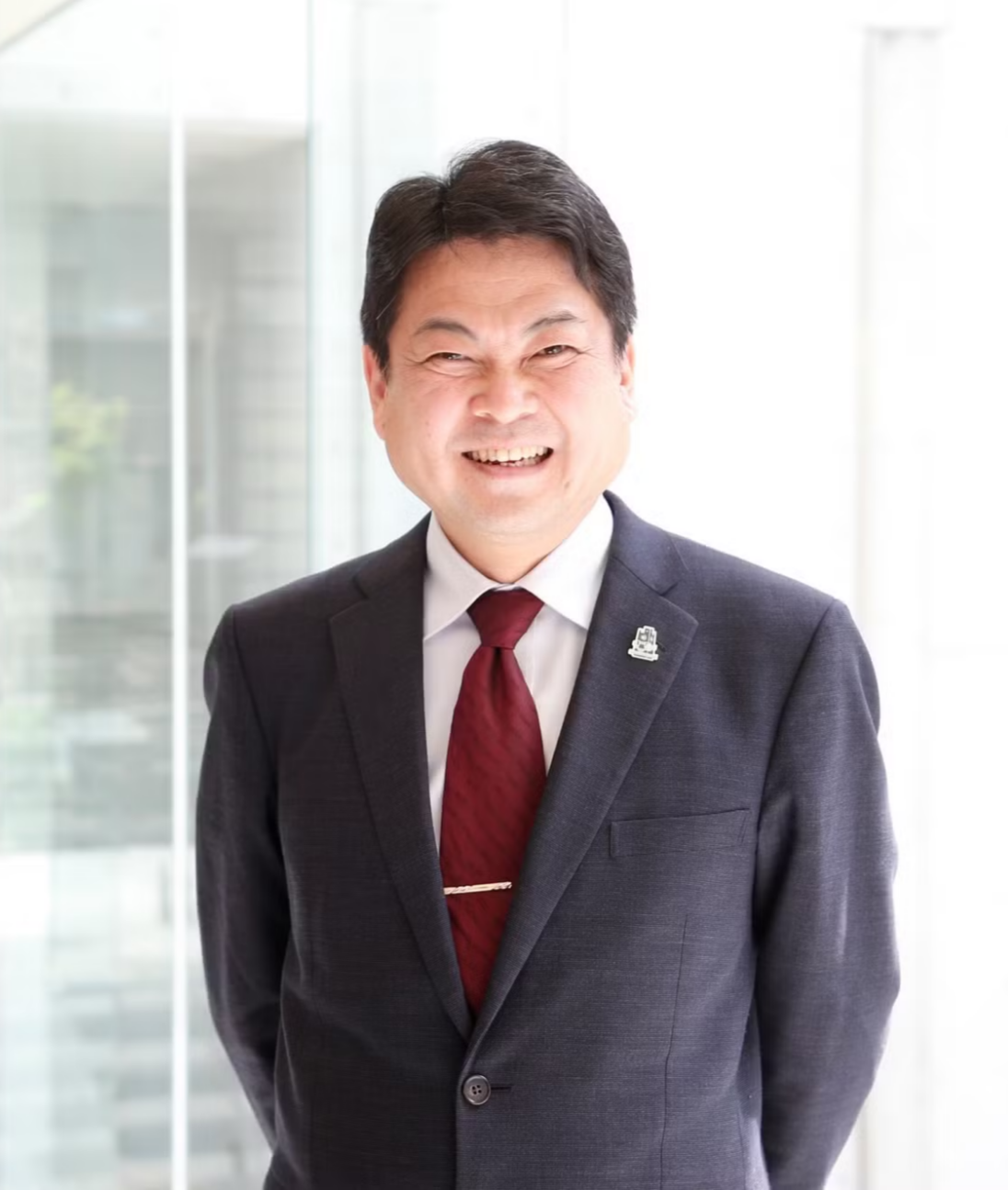
Project Leader
Masakazu SUGIYAMA
Director, Research Center for Advanced Science & Technology




